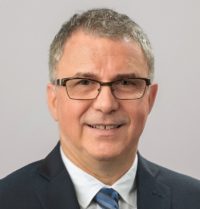February 8, 2023
SECURE 2.0: Retirement Changes You Need to Know

By Chris Palabe, CFS®, AIF®
You may have caught the news that President Biden signed the second iteration of the sweeping retirement act, SECURE Act 2.0 of 2022, and placed it into law on December 29th, 2022. The revised bill involves a variety of provisions that affect Americans at every stage and income level.
To simplify the complexity around these changes, we’ve created the following guide to provide you with a comprehensive overview of the shifts that come with the new legislation, as well as helpful tips on how to best plan for your retirement. We’ll go through the different aspects of SECURE 2.0 and how they might affect your savings and investments. Our goal is to offer you clarity on the new rules to help you make informed decisions about your retirement planning.
RMDs Are Changing Again
Perhaps the most significant change in SECURE 2.0 is the update to required minimum distributions. Under the original SECURE Act, the RMD age was increased from 70½ to 72 for taxpayers who have a traditional IRA or other qualified retirement accounts. With the new legislation, however, the RMD age has been increased to 73 for those born between 1951 and 1959. The RMD age will increase again in 2033 to age 75 for those born in 1960 or later. This can provide some much-needed tax relief for retirees who don’t necessarily need to withdraw funds at that age to pay for retirement expenses. It also allows those accounts to stay invested for longer, which can provide a boost to overall retirement savings.
Another notable change to the RMD rules includes a decrease to the steep 50% penalty for missed or late distributions. Starting in 2023, the penalty will drop to 25% of the missed RMD. Additionally, IRA owners will have the ability to reduce this penalty further (to 10%) if they take the RMD and file an amended tax return in a timely fashion.
SECURE 2.0 also changes the rules around RMDs for Roth contributions in employer-sponsored retirement accounts. Starting in 2024, Roth accounts will no longer be subject to the RMD requirement. The act also expands Roth eligibility to SIMPLE and SEP IRAs starting in 2023.
Increased Catch-Up Contributions
The SECURE 2.0 Act provides greater opportunities for retirement savings by increasing catch-up contributions. The most important changes include:
- IRA Catch-Up Contributions Indexed to Inflation: While the base contribution limit to IRAs ($6,500 in 2023) is indexed annually based on inflation, the catch-up amount ($1,000 in 2023) has traditionally been fixed. Starting in 2025, IRA catch-up contributions will be linked to inflation, allowing the contribution limit to increase as the cost-of-living increases.
- “Special” Catch-Up Contributions for Employees Age 60 to 63: The SECURE 2.0 Act increases catch-up contributions for employees aged 60 to 63 starting in 2025. As of age 50, retirement plan participants are able to make catch-up contributions up to $7,500 for 2023. The new law increases this amount to $10,000 (indexed to inflation) once you reach age 60.
- Roth Catch-Up Contributions Required for Those With Wages Above $145,000: Starting in 2024, employees with wages above $145,000 will be required to make any catch-up contributions to a Roth account, effectively eliminating the current-year deductibility of those contributions.
- Increased Catch-Up Contributions for SIMPLE Plans: In 2024, the catch-up contribution limit for SIMPLE plans (IRA and 401(k)) will increase by 10%. In 2025, the catch-up contributions will be increased to $5,000 (indexed to inflation) for employees aged 60 to 63.
529 Rollovers
Many Americans save for college education through 529 accounts, which allow up to $17,000 in gift-tax-free contributions per year, or $85,000 if the lump-sum election is selected. Contributions grow tax-free as long as they are used for eligible education expenses. If they are used for an unqualified expense, the earnings are taxable and the distribution is subject to a 10% penalty.
This is where rollovers come in. The new SECURE 2.0 provisions allow unused 529 funds to be rolled over into a Roth IRA starting in 2024. There are some strict limitations to this new rule, including:
- There is a lifetime rollover cap of $35,000.
- Rollovers are still subject to the annual Roth contribution limit ($6,500 in 2023), so it may take multiple years to completely roll over the funds.
- The rollover must be made to the 529 beneficiary’s Roth account (typically the student), not the 529 account holder’s Roth (typically the parent).
- The 529 must have been open for at least 15 years.
- Contributions and earnings made in the last 5 years cannot be rolled over.
Other Important Retirement Savings Provisions
The SECURE 2.0 is a wide-ranging law that covers many additional aspects of retirement readiness and overall financial health to help taxpayers better prepare for the future.
As part of this goal, the act expands and creates new opportunities for retirement savings. For instance, employers will now be able to offer employees the choice to receive matching contributions on a Roth or pre-tax basis. Previously matching contributions were always considered pre-tax. If Roth contributions are selected, they will be considered fully vested upon contribution. Though this might take some time for employers and payroll companies to implement, this option will allow employees to choose whether their matching contributions are taxed up front (Roth) or in retirement (traditional).
Employers will also be required to automatically enroll eligible employees in workplace retirement plans at a minimum 3% contribution rate starting in 2025. Retirement accounts will also be automatically portable, meaning account balances will immediately transfer to your new employer’s retirement account if you leave your current job.
Additionally, defined contribution plans will start offering emergency savings Roth accounts for non-highly compensated employees starting in 2024. Contributions are limited to $2,500 per year, but the first four withdrawals per year would not be subject to taxes or penalties.
Also in 2024, employers will be able to match an employee’s student loan payments by contributing a matching amount to their retirement account. This provision provides an extra incentive for student loan borrowers to make payments on their loans, while also helping them save for retirement.
Want to Know More About SECURE 2.0?
This new law provides an exciting opportunity to save more and plan for a comfortable retirement. But navigating the new opportunities available can be daunting. That’s why we’re here to help you understand the ins and outs of the above provisions.
At Palabe Wealth, we specialize in helping you plan for retirement and make the most of your savings. Our team of experts can help guide you through the changes in the new law and make sure it’s applied to your unique situation in the best way possible.
If you’d like to get started, simply reach out to us and Schedule a 15-minute introductory phone call or call us at 847-249-6600 to learn if we are the right fit for your financial goals. We look forward to helping you retire to a life you love!
About Chris
Chris Palabe is the founder and CEO of Palabe Wealth, a financial services firm providing retirement plan strategies for businesses and individuals. For 25 years, Chris has been serving his clients with customized plans and a boutique approach. He started his firm because of his passion for making a difference in others’ lives and a genuine desire to build long-term relationships with his clients so they can seek to achieve their ideal retirement and manage risk. Chris is a Certified Fund Specialist® (CFS®) and Accredited Investment Fiduciary® (AIF®) professional and has a degree from Université Denis Diderot (Paris VII). When he’s not working, you can usually find him riding horses and competing in dressage at a national level. He also loves reading, watching movies, and eating out. To learn more about Chris, connect with him on LinkedIn.
The opinions voiced in this material are for general information only and are not intended to provide specific advice or recommendations for any individual.
There is no guarantee that a diversified portfolio will enhance overall returns or outperform a non-diversified portfolio. Diversification does not protect against market risk.
This material was prepared for Palabe Wealth Inc.’s use.

Chris Palabe, CFS, AIF®
Chris Palabe is the CEO and a Financial Advisor at Palabe Wealth, a firm that provides exceptional expertise in the Financial Planning space. For over 25 years, he has cultivated a deep understanding of the complexities of wealth management and retirement planning, making him a valued advisor to both Plan Sponsors of 401(k) plans and Individual Investors.
Holding esteemed designations such as Certified Fund Specialist (CFS) and Accredited Investment Fiduciary (AIF), Chris showcases his commitment to upholding the highest standards of investment advice and fiduciary responsibility in his advisory relationships. These designations are a testament to his knowledge and dedication to providing clients with sophisticated and ethical financial guidance.
He holds his Series 6, 7, 63, and 65 licenses through LPL Financial, which qualify him to offer a broad range of financial products and services.
Chris’s distinguished career is characterized by his unwavering commitment to his clients' financial well-being. He focuses on crafting tailored strategies that aim to optimize retirement outcomes and financial independence. He continually strives to help the individuals he works with on their path towards financial success.
Over the years Chris has refined a consistent, strategic investment philosophy supported by a significant body of academic research. He believes that a widely diversified portfolio of investments tailored to each client’s unique risk tolerance and financial goals is the key to their financial success.
Beyond his professional achievements, Chris has a profound passion for dressage, a highly skilled form of horse riding performed in exhibition and competition. This discipline requires a remarkable level of dedication, precision, and harmony between rider and horse, qualities that mirror his approach to financial planning.






